|
Capacitors are used in virtually every electronic device for everything from decoupling to filtering, to power smoothing. Each type, including electrolytic, ceramic, tantalum, plastic, sliver mica, and many more, has its own advantages and disadvantages and can be used in different applications. Today, capacitors are able to provide relatively high levels of capacitance within components that occupy a small volume. Some recent designs using nanotechnology to increase capacitor storage show potential for the capacitor to replace the batteries in electric cars.
Inside the Capacitor
A capacitor consists of terminals that connect to two metal plates separated by a non-conducting substance, or dielectric. In theory, the dielectric can be any non-conductive substance. However, for practical applications, specific materials are used that best suit the capacitor's function. Mica, ceramic, cellulose, porcelain, Mylar, Teflon and even air are some of the non-conductive materials used. The amount of charge that can be stored depends on the surface area of the electrodes, the strength and composition of the insulation between them, and how close they are together. The dielectric dictates what kind of capacitor it is and for what it is best suited. Depending on the size and type of dielectric, some capacitors are better for high frequency uses, while some are better for high voltage applications.
A capacitor's storage potential, or capacitance, is measured in units called farads. A 1-farad capacitor can store one coulomb of charge at 1 volt. A coulomb is 6.25e18 (6.25 * 10^18, or 6.25 billion billion) electrons. One amp represents a rate of electron flow of 1 coulomb of electrons per second, so a 1-farad capacitor can hold 1 amp-second of electrons at 1 volt. Larger commercial supercapacitors, also known as ultracapacitors, have capacities as high as 3,000 farads.
Capacitor Types
Ceramic
 Ceramic capacitors are normally used for radio frequency and some audio applications. These capacitors range in value from figures as low as a few picofarads to around 0.1 microfarads. In view of their wide range and suitability for RF applications they are used for coupling and decoupling applications in particular. They are by far the most commonly used type being cheap and reliable and their loss factor is particularly low; although this is dependent on the exact dielectric in use. Their stability and tolerance is not nearly as good as silver mica types, but their cost is much less. Ceramic capacitors are normally used for radio frequency and some audio applications. These capacitors range in value from figures as low as a few picofarads to around 0.1 microfarads. In view of their wide range and suitability for RF applications they are used for coupling and decoupling applications in particular. They are by far the most commonly used type being cheap and reliable and their loss factor is particularly low; although this is dependent on the exact dielectric in use. Their stability and tolerance is not nearly as good as silver mica types, but their cost is much less.
There are a number of dielectrics that can be used. For low values a dielectric designated "COG" is normally used. This has the lowest dielectric constant but gives the highest stability and lowest loss. Where higher values are required in a given size, a dielectric with a higher dielectric constant must be used. Types with designations X7R and for higher values, Z5U are used, however their stability and loss are not as good as the capacitors made with COG dielectric.
Plastic film capacitors
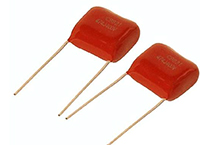 The most common types of plastic film capacitors include polycarbonate, polyester, Mylar, and polystyrene. Each has its own properties, allowing them to be used in specific applications. Their values may range anywhere from several picofarads to a few microfarads dependent upon the actual type. Normally they are non-polar. In general, they are good general-purpose capacitors that may be used for a variety of applications, although their high frequency performance is not usually as good as that of the ceramic types.
Electrolytic The most common types of plastic film capacitors include polycarbonate, polyester, Mylar, and polystyrene. Each has its own properties, allowing them to be used in specific applications. Their values may range anywhere from several picofarads to a few microfarads dependent upon the actual type. Normally they are non-polar. In general, they are good general-purpose capacitors that may be used for a variety of applications, although their high frequency performance is not usually as good as that of the ceramic types.
Electrolytic
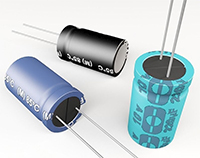 This type of capacitor is the most popular type for values greater than about 1 microfarad. It is constructed using a thin film of oxide on an aluminum foil. An electrolyte is used to make contact with the other plate. The two plates are wound around on one another and then placed into a can that is often aluminum. This type of capacitor is the most popular type for values greater than about 1 microfarad. It is constructed using a thin film of oxide on an aluminum foil. An electrolyte is used to make contact with the other plate. The two plates are wound around on one another and then placed into a can that is often aluminum.
These capacitors are polarized, and care should be taken to ensure they are placed in circuit the correct way round. If they are connected incorrectly they can be damaged, and in some extreme instances they can explode. Care should also be taken not to exceed the rated working voltage. Normally they should be operated well below this value. Also in power supply applications significant amounts of current may be drawn from them. Accordingly, capacitors intended for these applications have a ripple current rating which should also not be exceeded. If it is, then the component may become excessively hot and fail. It is also worth noting that these components have a limited life. It is often as little as 1000 hours at the maximum rating. This may be considerably extended if the component is run well below its maximum rating.
These capacitors have a wide tolerance. Typically the value of the component may be stated with a tolerance of -50% +100%. Despite this they are widely used in audio applications as coupling capacitors, and in smoothing applications for power supplies.
These are normally contained in a tubular aluminum can, each end being marked to show its polarity.
Tantalum
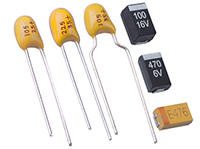 Ordinary aluminum electrolytic capacitors are rather large for many uses. In applications where size is of importance tantalum capacitors may be used. These are much smaller than the aluminum electrolytic and instead of using a film of oxide on aluminum they us a film of oxide on tantalum. They do not normally have high working voltages, 35V is normally the maximum, and some even have values of only a volt or so. Ordinary aluminum electrolytic capacitors are rather large for many uses. In applications where size is of importance tantalum capacitors may be used. These are much smaller than the aluminum electrolytic and instead of using a film of oxide on aluminum they us a film of oxide on tantalum. They do not normally have high working voltages, 35V is normally the maximum, and some even have values of only a volt or so.
Like electrolytic capacitors, tantalums are also polarized and they are very intolerant of being reverse biased, often exploding when placed under stress. However their small size makes them very attractive for many applications.
Ultracapacitors
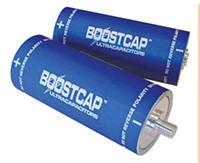 Ultracapacitors, also known as supercapacitors or electrochemical double layer capacitors (EDLC), are electrochemical capacitors that have an unusually high energy density when compared to common capacitors, typically on the order of thousands of times greater than a high-capacity electrolytic capacitor. They are mostly used for power smoothing, but also for motor start in large diesel and submarine engines. Ultracapacitors, also known as supercapacitors or electrochemical double layer capacitors (EDLC), are electrochemical capacitors that have an unusually high energy density when compared to common capacitors, typically on the order of thousands of times greater than a high-capacity electrolytic capacitor. They are mostly used for power smoothing, but also for motor start in large diesel and submarine engines.
Researchers John Kassakian and Riccardo Signorelli at MIT replaced the activated carbon in ultracapacitors with a dense, microscopic forest of carbon nanotubes that is grown directly on the surface of the current collector. The idea is to produce a larger surface area for electrons to collect and hence improve storage density. This improved storage coupled with fast charge times could allow capacitors to replace fuel cells in electric cars.
Surface Mount Devices (SMD) Capacitors
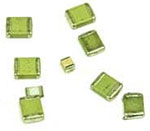 SMD capacitors are just one form of component that uses surface mount technology. This form of component technology has now become commonplace for manufacturing electronic equipment as it enables much faster, Smaller in size, and more reliable construction of electronic printed circuit boards. SMD capacitors are just one form of component that uses surface mount technology. This form of component technology has now become commonplace for manufacturing electronic equipment as it enables much faster, Smaller in size, and more reliable construction of electronic printed circuit boards.
SMD Capacitors are basically the same as their leaded predecessors. However instead of having leads they have metallised connections at either end.
This has a number of advantages:
Ease of use in manufacturing: As with all other surface mount components, SMD capacitors are very much easier to place using automated assembly equipment.
Size: SMD capacitors can be made very much smaller than their leaded relations. The fact that no wired leads are required means that different construction techniques can be sued and this allows for much smaller components to be made.
Lower spurious inductance: The fact that no leads are required and components are smaller, means that the levels of spurious inductance are much smaller and these capacitors are much nearer the ideal component that their leaded relations.
Lower cost: Not only can these components be used more easily in production reducing the production costs of the final product, but they also lend themselves more easily to their own high volume manufacture. The lack of leads makes their manufacture easier. In addition to this, the enormous volumes in which they are manufactured has resulted in significant cost reductions in their production.
Sources:
http://spectrum.ieee.org/nov07/5636
http://en.wikipedia.org/wiki/EEstor
http://www.electronics-radio.com/..../capacitor-uses.php
electronics.howstuffworks.com/capacitor.htm
http://www.economist.com/science/displaystory.cfm?story_id=10601407
http://www.radio-electronics.com/info/data/capacitor/capacitor_types.php
https://www.electronics-notes.com/articles/electronic_components/capacitors/smd-smt-surface-mount-capacitor.php
Sources:
http://spectrum.ieee.org/nov07/5636
http://en.wikipedia.org/wiki/EEstor
http://www.electronics-radio.com/..../capacitor-uses.php
electronics.howstuffworks.com/capacitor.htm
http://www.economist.com/science/displaystory.cfm?story_id=10601407
http://www.radio-electronics.com/info/data/capacitor/capacitor_types.php |